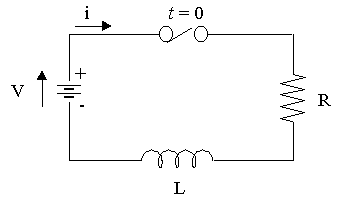 While reading transients i come to read......
While reading transients i come to read......
"the voltage across the inductor will immediately jump to battery voltage (acting as though it were an open-circuit) and decay down to zero over time (eventually acting as though it were a short-circuit)."
Why the inductor voltage will immediately jump to battery voltage. They say that thats because of the time changing magnetic field across the inductor that will induce equal and opposite voltage in the inductor according to Lenz-Law. But then at t= 0 they claim that the current is zero in the inductor. So when the current is zero in the Inductor then how a magnetic field can be built to induce opposite voltage across the inductor.
So whats happening at t=0 ? zero current and equal and opposite volage ? Since there is zero current then what makes the inductor voltage equal to battery voltage ? If there is current at t=0 then why its never mentioned anywhere in theory or in equations?
And what makes the voltage falls after t=0 after it reachs its maximum value?
